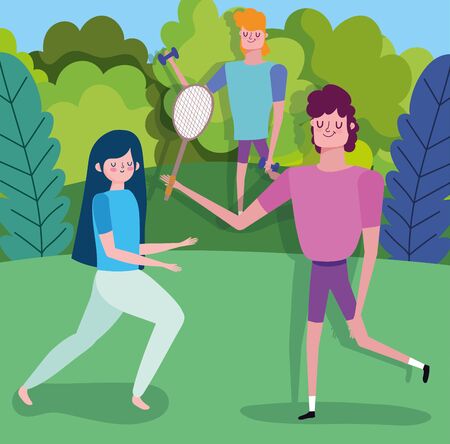1. Understanding Outdoor Allergens
Spending time outdoors is a big part of life in the United States, whether youre hiking, camping, or just enjoying a picnic at the park. But for many people, the great outdoors can also mean dealing with allergies. Knowing what triggers allergic reactions outside can help you stay safe and enjoy your time in nature.
Common Outdoor Allergens Across America
Outdoor allergens vary depending on where you are in the U.S. Here are some of the most common:
| Allergen | Where Its Common | Season |
|---|---|---|
| Pollen (trees, grasses, weeds) | Nationwide, but type varies by region (e.g., ragweed in Midwest, birch in Northeast) | Spring to Fall |
| Insect stings (bees, wasps, fire ants) | Most states; fire ants mainly in South | Late Spring to Early Fall |
| Plants (poison ivy, oak, sumac) | Widespread except desert areas; poison oak mostly West Coast | Year-round but more contact in warmer months |
Pollen: The Seasonal Sneaker
Pollen from trees, grasses, and weeds is a top outdoor allergen. In spring, tree pollen is everywhere. Summer brings grass pollen. In fall, weeds like ragweed take over. Different parts of the country have different problem plants. If you notice sneezing or itchy eyes during certain months, pollen may be the cause.
Insect Stings: Small but Mighty
Bees, wasps, hornets, yellow jackets, and fire ants can all trigger allergic reactions. Some people only get mild swelling or redness; others can have severe reactions called anaphylaxis. These insects are most active when it’s warm out. Fire ants are especially common in the South.
Irritating Plants: More Than Just a Rash
Plants like poison ivy, poison oak, and poison sumac release oils that cause itchy rashes on contact. These grow almost everywhere except deserts and high mountains. Even burning these plants can release irritants into the air that affect your skin and lungs.
Know Before You Go
If you’re planning to be outside for a while—on a hike, camping trip, or even gardening—it helps to know which allergens are common in your area and season. Local weather apps often include pollen counts to help you plan ahead.
Recognizing Symptoms of Allergic Reactions
Why Quick Recognition Matters Outdoors
When youre out hiking, camping, or enjoying a picnic, allergic reactions can happen fast. Early identification is crucial—especially when medical help may be far away. Knowing the signs helps you act quickly and keeps everyone safer.
Common Triggers in Nature
- Insect stings (bees, wasps, fire ants)
- Pollen from plants and trees
- Certain foods (like peanuts, tree nuts, or shellfish during outdoor meals)
- Contact with plants (like poison ivy or poison oak)
Early Signs to Watch For
| Symptom | Description | What It Might Look Like Outdoors |
|---|---|---|
| Itching & Hives | Red, raised bumps that itch; sometimes appear suddenly | Small itchy spots on arms after touching plants or eating outside food |
| Swelling | Puffiness in lips, face, eyes, hands, or feet | Lip or eye swelling after an insect bite or snack break |
| Sneezing & Runny Nose | Nasal congestion, sneezing fits, watery eyes | Frequent sneezing while hiking through fields or forests |
| Mild Nausea/Stomach Cramps | Slight stomach discomfort or nausea after eating | Tummy aches following shared trail snacks containing allergens |
Severe Anaphylaxis Symptoms: Act Fast!
Anaphylaxis is a severe reaction that can be life-threatening. Call 911 right away if you notice these symptoms:
| Severe Symptom | Description |
|---|---|
| Trouble Breathing/Wheezing | Shortness of breath, noisy breathing, tight chest or throat feeling; may sound like asthma but happens quickly after exposure to a trigger. |
| Dizziness/Fainting | Feeling lightheaded or passing out; could mean blood pressure is dropping. |
| Swelling of Tongue/Throat | Trouble talking or swallowing; voice sounds hoarse or squeaky. |
| Rapid Heartbeat/Paleness | Heart racing faster than normal; skin may look pale or bluish especially around lips and nails. |
If You See These Severe Signs:
- Use an epinephrine auto-injector immediately if available.
- Call 911—even if symptoms improve after using epinephrine.
- Keep the person lying down with feet elevated unless they are having trouble breathing (then help them sit up).
Tip for Outdoor Adventurers:
If you know someone in your group has allergies, ask where they keep their emergency medication before heading out. Preparation saves lives.

3. Prevention Strategies for Outdoor Activities
Smart Preparation Before Heading Outdoors
Preparation is the first line of defense against allergic reactions and anaphylaxis when spending time outside. Know your allergens—whether it’s pollen, insect stings, or certain foods. Always check the weather and pollen forecast for your area before planning a hike, picnic, or camping trip. If you have severe allergies, let friends or group leaders know about your condition and share your emergency action plan.
Packing Essentials for Allergy Safety
| Item | Purpose | American Outdoor Tips |
|---|---|---|
| Epinephrine Auto-Injector (EpiPen) | Immediate treatment for anaphylaxis | Carry at least two; keep in easy-to-reach spots like a hip pack or backpack front pocket |
| Antihistamines | Mild to moderate allergic reactions | Include chewable or liquid forms for quick use; store in waterproof containers on hikes or trips to lakes/rivers |
| Medical ID Bracelet/Tag | Identifies allergy in emergencies | Engraved with key info; common among outdoor enthusiasts in the U.S. |
| Allergy Action Plan Card | Guides others during emergencies | Laminated card kept in wallet or first aid kit; share with group leader |
| Sunscreen & Bug Spray (Hypoallergenic) | Prevents skin reactions and bites/stings | Choose fragrance-free, DEET-free formulas when possible for sensitive skin |
| Protective Clothing (Long sleeves/pants, hats) | Reduces exposure to plants/insects | Lightweight fabrics ideal for hiking, camping, fishing, and backyard BBQs |
Safe Practices During Outdoor Activities
- Avoid high-risk areas: Stay away from heavy brush, tall grass, and flowering plants if you’re sensitive to pollen or insect stings.
- No barefoot walking: Even at the park or beach, shoes protect from stings and hidden allergens.
- Food safety outdoors: Bring allergen-free snacks. At group picnics, keep your food separate and clearly labeled.
- Tent and gear care: Clean tents, sleeping bags, and backpacks regularly to prevent buildup of dust mites or mold.
- No scented products: Skip perfumes and scented lotions that can attract bees or irritate sensitive skin.
Pollen & Insect Awareness in American Outdoor Culture
Pollen counts are highest in the early morning—plan activities later in the day if possible. When hiking popular trails or camping at state parks, use established campsites and avoid disturbing natural nests or hives. For water activities like kayaking or fishing, rinse off after being in lakes or rivers to wash away potential plant allergens.
4. Emergency Response and Action Plan
Immediate Steps to Take During an Allergic Reaction
If someone shows signs of an allergic reaction while outdoors, stay calm and act quickly. The faster you respond, the better the outcome. Here’s what to do right away:
- Move the person away from the allergen (like food, insects, or plants).
- Check for symptoms: hives, swelling, trouble breathing, dizziness, or vomiting.
- If they have an epinephrine auto-injector (EpiPen), get it ready for use.
- Call for help if symptoms are severe or rapidly getting worse.
How to Use an Epinephrine Auto-Injector
Epinephrine can save lives in cases of severe allergic reactions (anaphylaxis). Here’s a simple guide:
| Step | Action |
|---|---|
| 1 | Remove the auto-injector from its case. |
| 2 | Take off the safety cap. |
| 3 | Hold firmly against the outer thigh (can go through clothing). |
| 4 | Push down until you hear or feel a click. |
| 5 | Hold in place for 3 seconds. |
| 6 | Remove and massage the area for 10 seconds. |
If symptoms don’t improve within a few minutes, use a second dose if available.
When to Call 911 in the U.S.
Anaphylaxis is always an emergency. Call 911 immediately if:
- The person has trouble breathing or swallowing.
- The reaction involves multiple body systems (skin, breathing, stomach).
- The person feels faint, confused, or loses consciousness.
- You’ve used an epinephrine auto-injector—even if symptoms seem better after use.
What to Tell 911 Dispatchers
- Your exact location (use landmarks or GPS coordinates if outdoors).
- The age and condition of the person affected.
- The cause of the reaction if known (bee sting, food, etc.).
- If you have given epinephrine already.
5. Building an Allergy-Smart Outdoor Kit
Heading out into the wild means being ready for anything, especially if you or someone in your group has allergies. A well-prepared allergy kit is more than just peace of mind—it’s a lifesaver. Here’s what to include to keep your adventures safe and stress-free.
Must-Have Items for Your Allergy Kit
| Item | Purpose | Pro Tips |
|---|---|---|
| Epinephrine Auto-Injector (EpiPen) | Treats severe allergic reactions (anaphylaxis) | Bring two, check expiration dates, and teach everyone how to use it |
| Antihistamines (tablets or chewables) | Reduces mild symptoms like sneezing, hives, itching | Pill and liquid forms for all ages; store in waterproof bags |
| Asthma Inhaler (if prescribed) | Manages breathing issues triggered by allergies | Label with user’s name; pack extra spacer if needed |
| Allergy Action Plan Card | Step-by-step guide for emergencies | Include emergency contacts and medication instructions |
| Medical ID Bracelet or Tag | Alerts others to allergies in case of emergency | Wear at all times outdoors; update info as needed |
| Sterile Wipes & Hand Sanitizer | Cleans hands and surfaces to remove allergens | Go fragrance-free; small travel packs are best |
| Bandaids & Basic First Aid Supplies | Covers minor cuts and scrapes, which can complicate reactions | Add tweezers for insect stings or ticks |
| Emergency Whistle & Flashlight | Signals for help if you need assistance fast | Attach to backpack for quick access; check batteries regularly |
| Laminated Emergency Instructions Sheet | Clearly explains what to do in case of reaction—simple and waterproofed for any weather | Keep on top of the kit for easy grab-and-go action |
Medications Checklist for Outdoor Safety
- Epinephrine auto-injectors (at least two per person with severe allergies)
- Nondrowsy antihistamines (like loratadine or cetirizine)
- Pain relievers (acetaminophen or ibuprofen, if safe)
- Cortisone cream for skin rashes or bites
- If prescribed: inhaler, nasal sprays, or other rescue medications
- Avoid sharing medications—label everything!
Extra Resources to Pack Alongside Your Kit
- A list of local hospitals or urgent care centers near your hiking area
- A charged cell phone or satellite communicator
- A backup power bank
- A printed map and compass—technology can fail
- Your health insurance card copy (laminated)
- A small notebook and pen to jot down symptoms and timings if a reaction occurs
- An emergency contact sheet for every group member
- Pet allergy meds if you’re bringing furry friends along
- A zip-top bag for safe disposal of used auto-injectors or medicines
- An information pamphlet about identifying common outdoor allergens in your area
Quick Packing Tips:
- Use a bright-colored pouch so it’s easy to find in your backpack.
- Keep items organized with mini pouches or zip bags.
- Restock after every trip—don’t leave it until next time!
- If you’re traveling with kids, make sure their kit is age-appropriate.
Your Allergy Kit = Confidence Outdoors!
An allergy-smart kit helps you relax and enjoy nature, knowing you’re ready for whatever comes your way. Share your plan with friends, family, and fellow adventurers so everyone knows how to help if something happens. Stay prepared—and happy trails!
6. Community Support and Resources
When spending time outdoors, it’s important to know where to find help and information about managing allergies and anaphylaxis. Across the U.S., many organizations, online communities, and local groups offer support, education, and resources for people with allergies. Here’s a simple overview of some helpful options:
Key U.S. Organizations
Organization What They Offer Website FARE (Food Allergy Research & Education) Outdoor allergy safety guides, educational events, advocacy, emergency plans foodallergy.org AAFA (Asthma and Allergy Foundation of America) Allergy alerts, outdoor tips, free webinars, support groups aafa.org Camp Blue Spruce Summer camps for kids with food allergies—safe outdoor experiences campbluespruce.org KFA (Kids With Food Allergies) Family-friendly tips, community forums, recipes for safe outings kidswithfoodallergies.org The Eczema Society of America Advice for managing skin allergies during outdoor activities nationaleczema.org Online Support Networks & Local Groups
- Facebook Groups: Search for “outdoor allergy support” or “anaphylaxis awareness” to find private or public groups where people share real-life advice and updates.
- Meetup.com: Look for local meetups focused on allergy-friendly hiking, camping, or family outings in your area.
- Parks and Recreation Departments: Many city and state parks offer programs or guidance for guests with allergies. Ask about allergy-aware staff or safe picnic zones.
- Your Local Pharmacy: Some pharmacists offer workshops on using epinephrine auto-injectors and carrying emergency kits outdoors.
How These Resources Help Outdoors Lovers
- Education: Learn how to prevent reactions and use emergency medicine in the wild.
- Community: Connect with others who understand your needs and can share practical advice.
- Advocacy: Stay informed about new laws or park policies that protect people with allergies.
- Camps & Events: Find camps, hikes, or events specially designed to keep people with allergies safe while enjoying nature.
Your Next Steps
If you plan to explore the outdoors with allergies or care for someone who does, reach out to these organizations and join local groups. With the right support network, enjoying the beauty of nature becomes much easier—and safer—for everyone.


